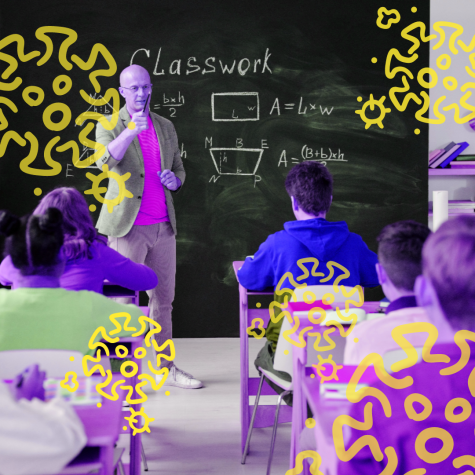Teachers’ Thoughts on Returning to School
February 25, 2021

When the Pfizer-BioNTech and Moderna vaccines were approved in the United States, demand far exceeded supply, which meant only certain people could be vaccinated. The trick was figuring out who. This led to the creation of phases where people were grouped based on priority, and the people given the most priority were, among several others, teachers. In the past few months, these teachers have all gone through the same routine. They head into the hospital and get their first round of vaccinations before returning home to rest and wait for the date of their second dose. After waiting 21 days, they return to the hospital and once again get the weakened virus pushed into their bloodstreams. Most are rushing to get vaccinated before mid-February: the designated time for Fairfax County Public Schools teachers to return to school. Several teachers have already received their two rounds of vaccination and are ready to return to school on time, a few weeks before the students. As teachers think about returning to school, their thoughts snap to more than their lesson plans, they are also thinking about the school environment that will come with the students and staff returning.
As students return to school, the main concerns of teachers is the chaos that will follow. Teachers have already encountered the struggle of trying to get students to behave on a normal day without forcing them to follow health protocols, but now they have to enforce safety measures on a group of students who are craving social interaction. These students have been kept from each other for almost a year and even with the new opportunity to finally meet up again, they will be required to maintain social distancing, wear masks, follow cleaning protocols and listen to all the other guidelines. Teachers are predicting that the in-school environment in combination with seeing their friends after so long will cause some students to ignore safety measures. In more extreme cases, some teachers can imagine the games these students will create, like pulling each other’s masks down. To say the least, they believe that the chances of school looking hectic once students have returned are very high.
“I think if people follow the guidelines (social distancing, wearing masks, and cleaning protocols) that I should be safe,” Madison Science teacher Scott Hazen said. “The flip to this is I know how hard I have to nag students to behave on a good day in person… so I have some reservations.”
The struggle of getting students to behave will not change whether students and staff return to school now or in a year, the only difference is the risk involved. Some have acknowledged that returning to school this spring is not only more risky than staying online for the rest of the year, but it will not resemble school before the pandemic, so waiting until next fall to return might be a better option.
“If it were my personal choice I’d rather go back next fall, hopefully all normal… and that [normalcy] is not going to be happening this spring,” Madison Spanish teacher Shani Moser said.
On the other side, there is the argument that students and teachers should at least experience and adjust to this hybrid version of school since they might be dealing with it for longer than expected.
“I am okay with the return because I want to practice and learn how to leverage technology in a hybrid plan,” Hazen said. “I feel the hybrid plan will be in place for many months to come, and so I am ready for that next step.”


